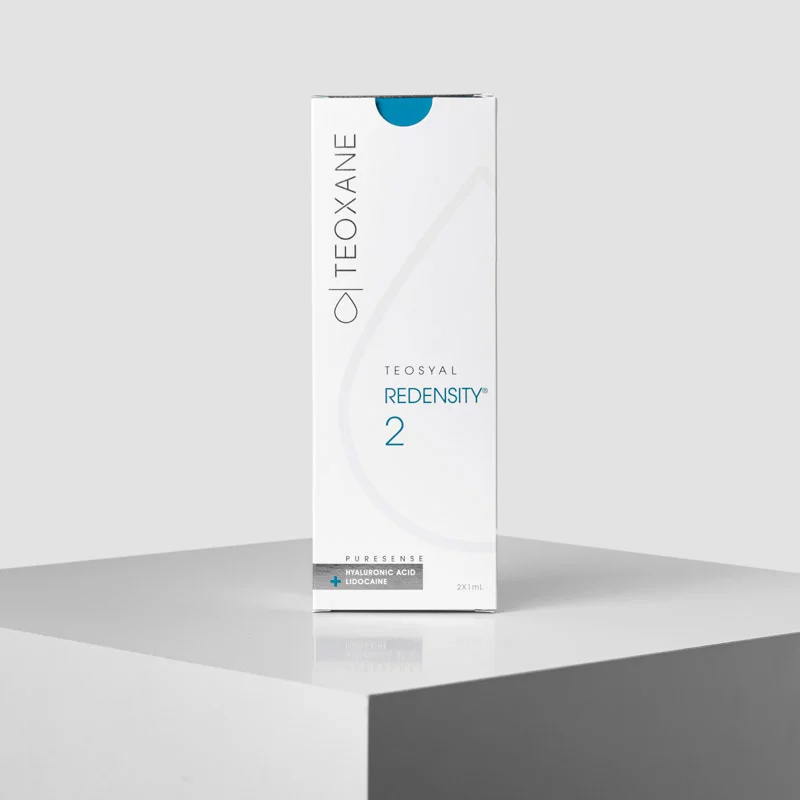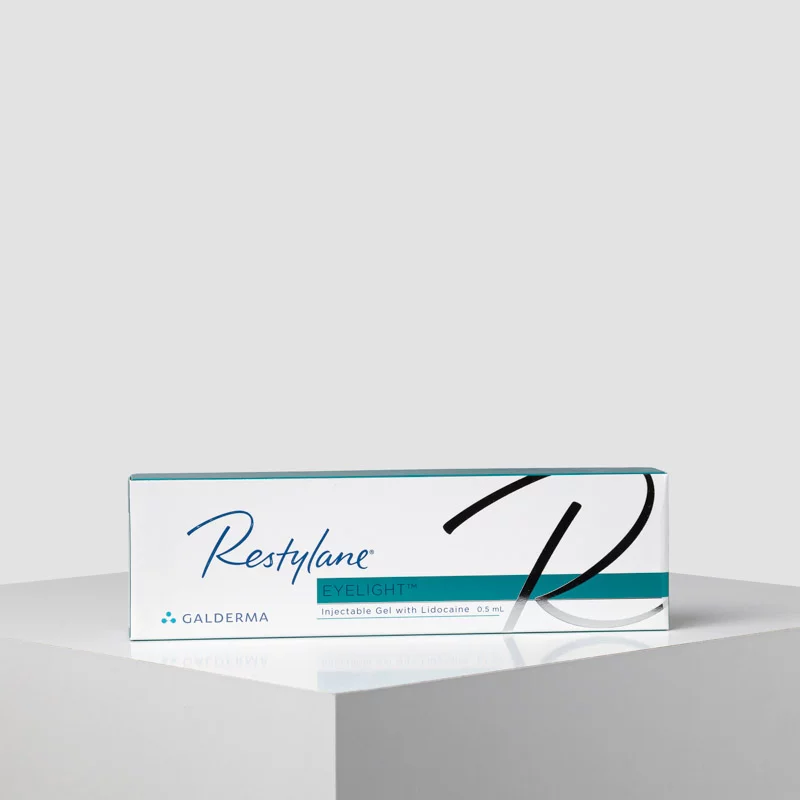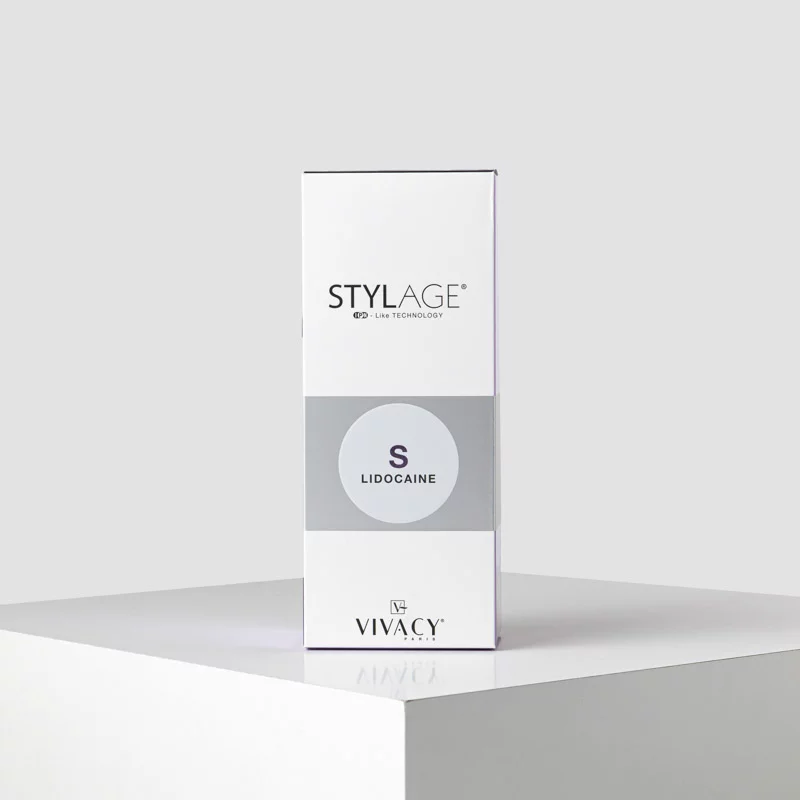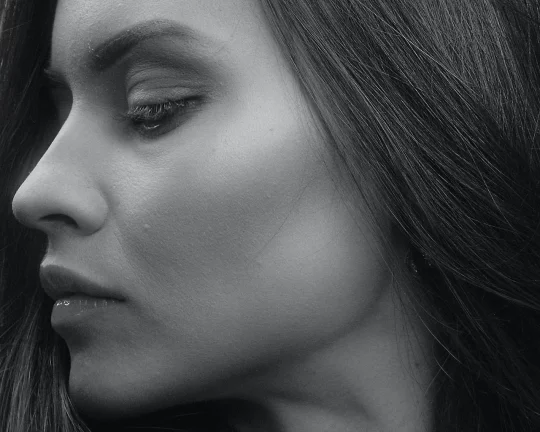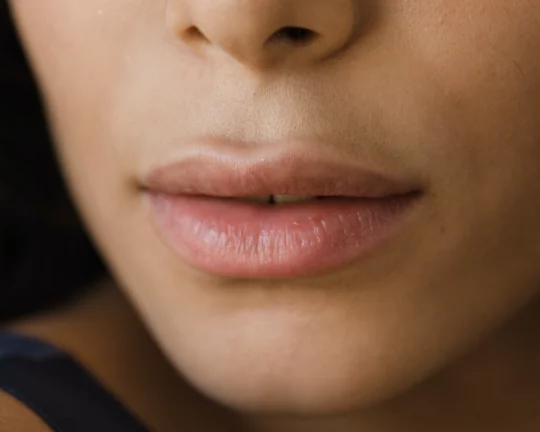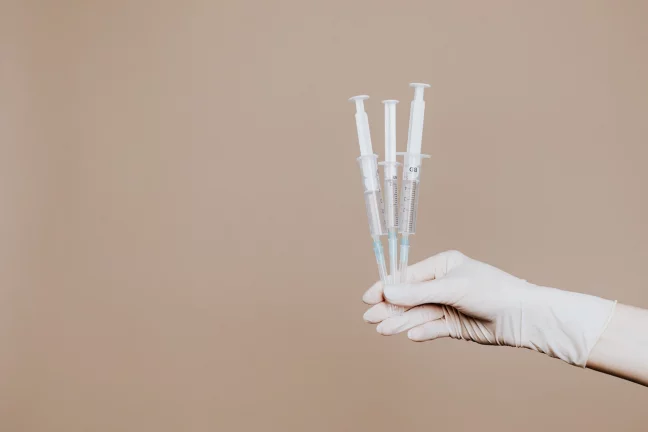-

- Author e-FILLERS Team
- May 3rd, 2023
Dermal Fillers in the Tear Trough Area

Tear Trough Area
The tear trough area, located between the lower eyelid and cheekbone, can show signs of aging, such as hollowing and dark circles. Dermal fillers are an effective treatment for restoring volume and rejuvenating this area, providing patients with a more youthful and refreshed appearance. In a 2006 multispecialty consensus recommendation article, the tear trough was listed as the most challenging area to treat with hyaluronic acid (HA).
“In a 2006 multispecialty consensus recommendation article, the tear trough was listed as the most challenging area to treat with hyaluronic acid (HA).”
Types of Dermal Fillers for Tear Troughs
Several types of dermal fillers are suitable for the tear trough area. Hyaluronic acid fillers, such as Restylane, Teosyal and Stylage are the most common type used in this area. These fillers are being used throughout the world as they are safe and effective, offering immediate results that last up to one year.
Check out e-FILLERS category of Tear Troughs Fillers to find products that are ideal for this area.
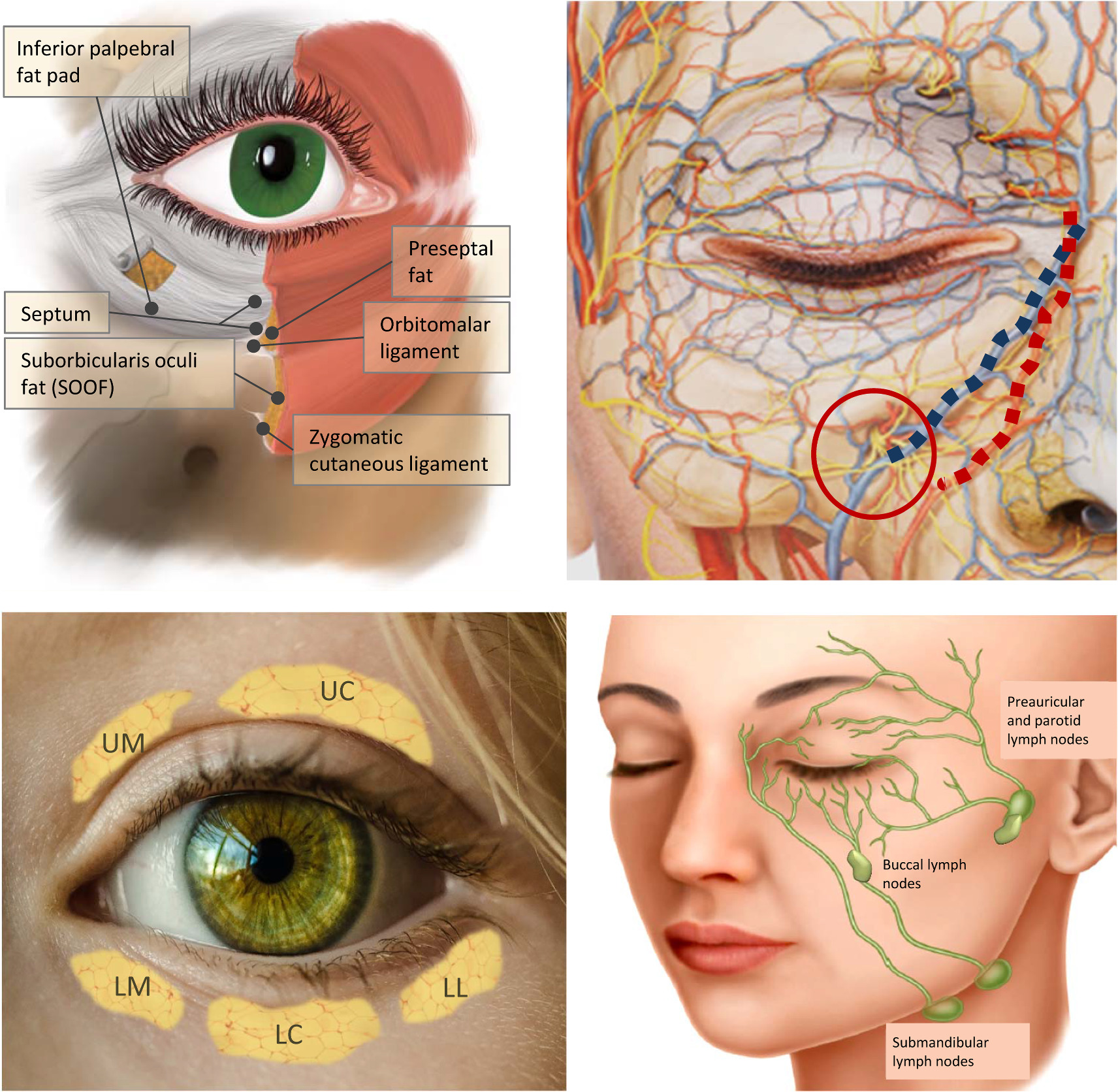
J of Cosmetic Dermatology, Volume: 20, Issue: 1, Pages: 6-17, First published: 26 August 2020, DOI: (10.1111/jocd.13475)
The Anatomy of Tear Trough Area
The term “tear trough” refers to the depression formed in the medial lower eyelid, lateral to the lacrimal crest, and limited in its inferior aspect by the inferior orbital rim, ending in a virtual vertical line projected from the pupillary axis. There are various structures in this area that, apart from contributing to the formation of the tear trough, should be carefully considered.
The anatomical structures involved in the formation of the tear troughs are the periocular area, the vascular and nerve structures of the area, the angular vein and the angular artery, the infraorbital nerve, the fat pads and the lymph drainage of the periocular area. It is crucial for each medical professional to know very well the anatomical structures of the area and have received dedicated training in order to perform this procedure.
Based on a review article published in 2020 by Javier Anido MD, José Manuel Fernández MD, Ignacio Genol MD, Natalia Ribé MD and Gema Pérez Sevilla MD, “treating eye trough deformity means treating the change in volume, but also correcting the position of deep fat compartments, depending on the etiology of the deformity. In some cases, such as excess fat in inferior palpebral fat pads and septal laxity repositioning tissue by means of HA filler may improve the appearance. In any case, careful evaluation and patient selection are crucial.”
Pre-Treatment Consultation
Before performing a dermal filler treatment in the tear trough area, a thorough consultation with the patient is essential. During this consultation, doctors should inquire about the patient's medical history, allergies, and previous cosmetic treatments. They should also assess the patient's tear trough area to determine the appropriate filler and injection technique for their unique facial anatomy
Injection Technique
The tear trough area is a delicate area that requires a skilled injection technique to avoid complications, such as swelling and bruising. Doctors can use a cannula or needle technique to inject the filler, depending on the patient's needs and the injector's preference. A cannula technique can reduce the risk of complications and provide a more natural-looking result.
There are some popular techniques that have gained popularity throughout the last decades, with the most known being Lambros's technique, Kane's technique, Technique of Stutman and Codner, the technique of Kenneth and Samantha Steinsapir, Technique of Patel and Glaser and Consensus group technique. Many doctors tend to generate personal techniques based on their experience and training.
The protocol should provide the maximum safety and efficacy in all patients. It is essential to know how to correctly locate the entry point for each eye to be treated, and this is determined from its mathematical definition: the intersection between two lines. The entry points will depend on the choice of injection method.
Post-Treatment Care
After the treatment, patients should avoid strenuous exercise, alcohol consumption, and blood-thinning medication for 24-48 hours to minimize the risk of bruising and swelling. Doctors should provide patients with detailed aftercare instructions and follow-up appointments 7-15 days after the HA injections to monitor their progress.
Results
Usually, the patient will be able to observe immediately significant improvement in the area after the dermal filler injection, including full eye rejuvenation, reduce of eye wrinkles and under eye shadows.
The result of the treatment typically becomes more natural as the swelling reduces between 1-3 days after the procedure. The long-term results on the patient may vary based on age, skin type, sports activity, and applied technique but it is estimated to last between 9 and 12 months.
Conclusion
Dermal fillers are a safe and effective treatment for rejuvenating the tear trough area, providing patients with a more youthful and refreshed appearance. As a doctor, it's essential to have a comprehensive understanding of the areas anatomy, the different types of fillers, pre-treatment consultation, injection technique, and post-treatment care to achieve optimal results for your patients. By following these guidelines, doctors can help their patients achieve natural-looking, long-lasting results with minimal complications.
References:
• Dermal Fillers for the Treatment of Tear Trough Deformity: A Review of Anatomy, Treatment Techniques, and their Outcomes - https://www.ncbi.nlm.nih.gov/pmc/articles/PMC3560162/
• Recommendations for the treatment of tear trough deformity with cross-linked hyaluronic acid filler - https://onlinelibrary.wiley.com/doi/10.1111/jocd.13475
• Hyaluronic Acid Injections for Correction of the Tear Trough Deformity - http://vallambros.com/publications/tear-trough-fillers.pdf
• 5 Techniques of Dermal Filler Injection for Tear Trough Augmentation - https://www.ifaas.co/single-post/5-techniques-of-dermal-filler-injection-for-tear-trough-augmentation
• Undereye Tear Trough Filler: What You Should Know - https://www.healthline.com/health/undereye-tear-trough-filler
Dermal Fillers
6+1 Tips on How to Preserve Dermal Fillers
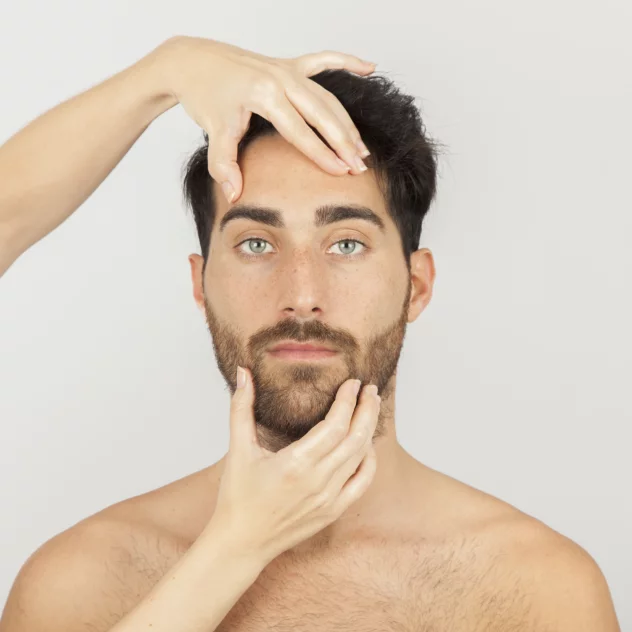
.webp)

